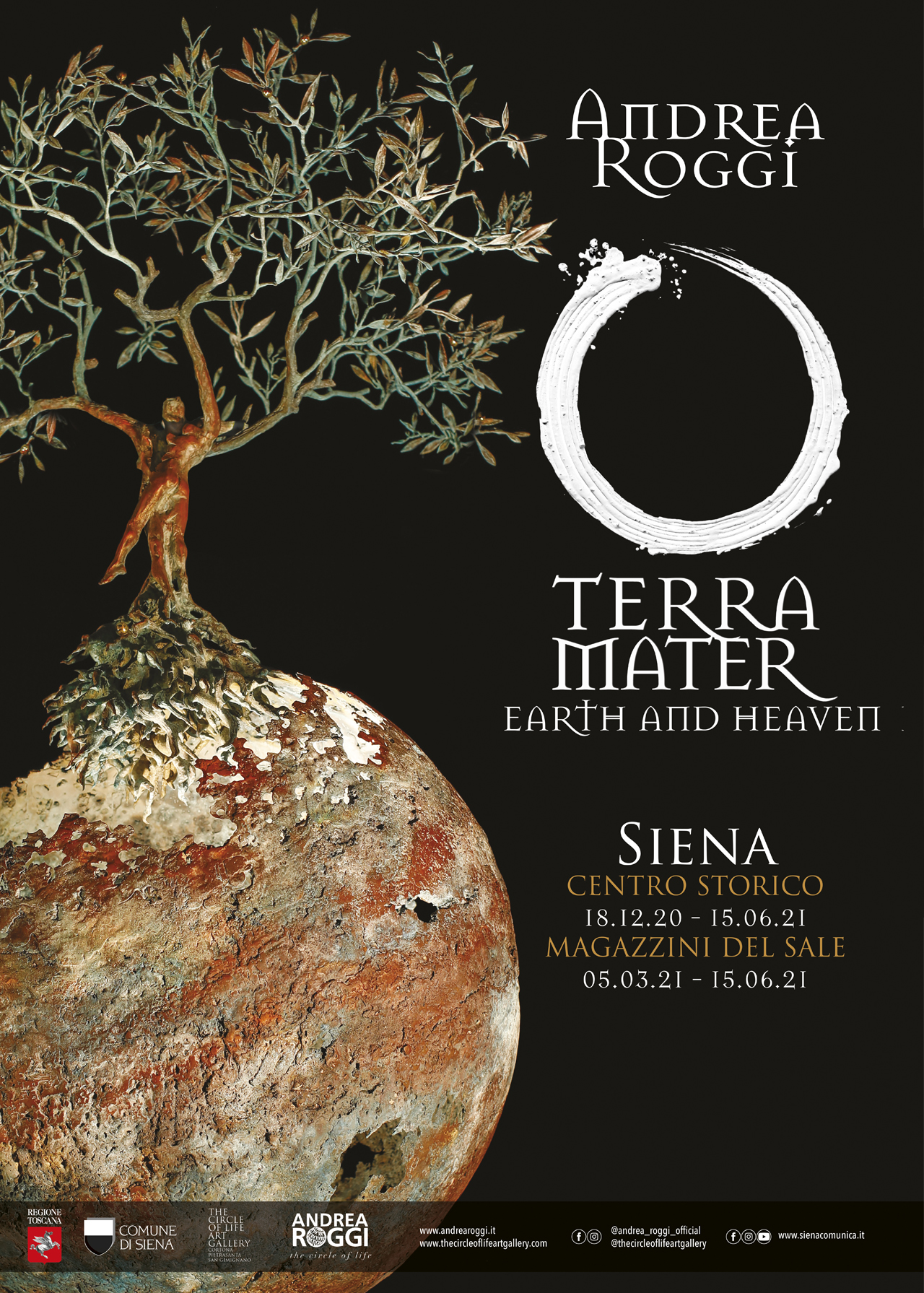
TERRA MATER
EARTH and HEAVEN
SIENA
December 18th 2020 - June 15th 2021
Belvedere, San Domenico square, Campaccio street, Pianigiani street, Tolomei square, Logge della Mercanzia, del Campo square and Cathedral square
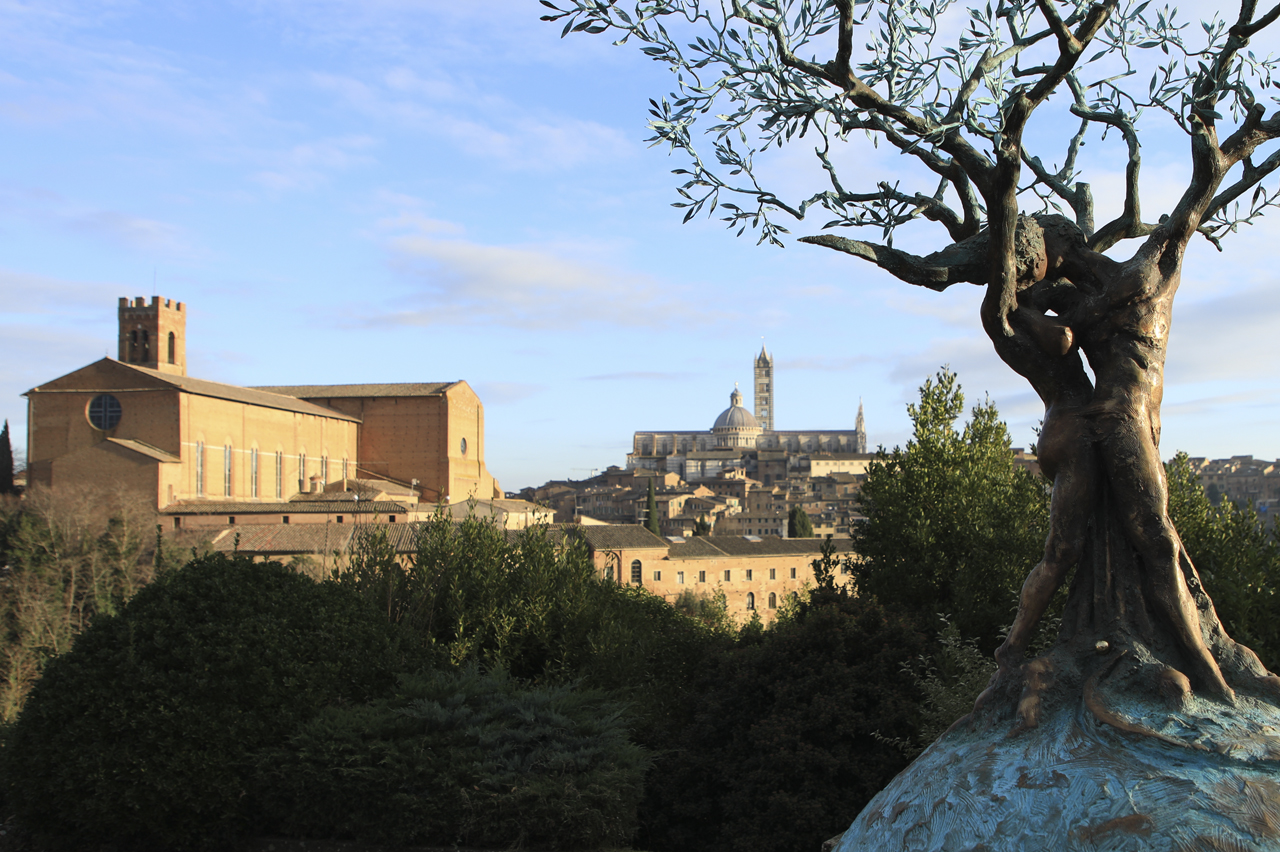
"Roman divinity that clearly reveals itself as the result of secondary development, carried out in historical times and under the influence of Greek religious ideas, of the ancient Goddess Tellus.
This has only the character of an agrarian divinity, that is to say it is the Goddess of Vegetation, of Sowing and Crops, without any relation to the cult of the dead. [...]
Instead, the concept of the Terra Mater was formed in Rome only later.
The passage from Tellus to Terra Mater through Tellus mater is not sure, and certainly would not have occurred without Greek influences.
The Earth is now in relationship with the cult of the dead, and it is considered as a divine force that has in itself the seeds of life and death. [...]
It is not, however, like the Greek Gaea, the passive female element in contrast to the masculine active element of the sky (Uranus) or of the sea (Oceano); but it is the ground in its double meaning both of field of the harvest and place of burial. [...]
It is certain, however, that the ancient Goddess Tellus has now become Terra Mater and it represents the generating power of the soil, hence the life of plants and animals and the existence of men themselves”.
Franca Parise Badoni
Encyclopedia of Ancient Art (1966)

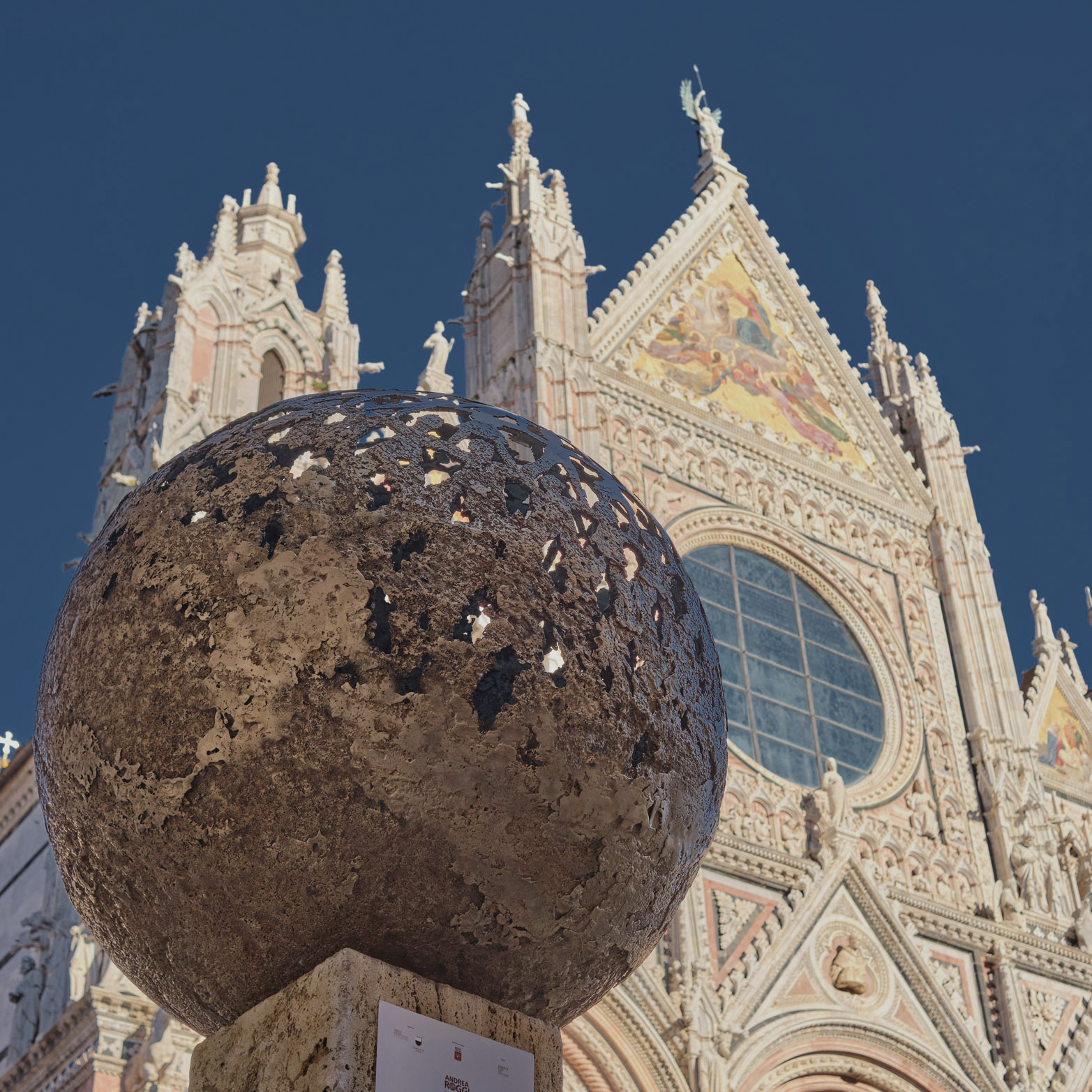
«GOD CREATED HEAVEN [...]» AND ROGGI THE EARTH!
To Gilberto Madioni
an art critic,
an unforgettable friend,
for his generosity.
I would like to start with the observation of a clear absence. Take, for example, the Allegory of the Good Government (c. 1338) - a fresco that was painted by Ambrogio Lorenzetti for the Sala dei Nove
Therefore, in these times, in the ailing society in which we currently live, there is great need for beauty. The Municipality of Siena, led by the De Mossi Administration, is extremely attentive to the issue of urban décor in all its forms. Nonetheless, cleanliness and order are obviously not enough, although they are indeed the main business card of a city. They are not enough especially in a beautiful historic centre like the Sienese one. This idea could be epitomised by the phrase “beauty attracts beauty". While this is actually widely known, the exact opposite is also perfectly true.
Thus, for the second time around, as done with master Alberto Inglesi in the spring of 2019, Siena has called on another famous sculptor to step up to the slate: Andrea Roggi, the Tuscan born and raised artist. He certainly does not need much introduction, for he is so well known and appreciated across Italy and abroad. To Siena and its surroundings, Roggi is, so to speak, an old acquaintance. He has carried out several public art works over the years, including the statue of Saint Catherine of Siena in Pontignano (2006), the tribute to the poet and pastor Dina Ferri (2006) in Radicondoli, the monument dedicated to Giuseppe Garibaldi (2007) in Rapolano Terme, the sculpture Rinascita(4)(2011), once more in Rapolano Terme and the depiction of Christ for the high altar of the Sienese church of San Bernardo Tolomei (2017).
Roggi has decided to intangibly gift the city, its inhabitants, and anyone who should visit, with an open-air exhibition scattered around Siena until mid-June 2021. It consists of nine monumental bronze pieces of artwork which have been strategically installed in highly transited places. Art has arisen from the artist's studio, from the foundry and from the galleries and finally becomes enjoyable for anyone - perhaps even involuntarily. This triggers a meaningful visual dialogue between art and space, urban landscapes and passers-by.
Terra Mater | Earth and Heaven is the title of the exhibition and frankly, it deserves a prior semantic reflection. Terra, meaning Earth, is a feminine noun in both Latin and Italian. Roggi is addressing the whole world, the entire planet on which we live. The same world upon which a pandemic was thrust, that led to unprecedented forced closures. A world that seems to have sent a clear message: "enough of the destruction of nature, of the excessive exploitation of its resources, and the excessive pollution!”». Perhaps we still have time to switch the course of our actions, so as not to find ourselves plunging into the abyss. By terra, however, especially when followed by the Latin word mater, we also mean our mother-earth; a maternal and native nuance, basically, our homeland. Each and every one of us has one, the place in which we were raised, where we were formed to cherish certain fundamental values, our roots which dig into the ground and draw nourishment from it.
“This gray land whose tops were smoothed by the wind
on its gallop towards the sea, […]
Bare and clean this Tuscan land
where the thought of the ones who stay rushes away
and the one of those who left whisks away […]”
The above verses were written in the poem Dalla Torre(5) by the great poet Mario Luzi. Furthermore, in some of his pages he glossed the following remark "earth is mother, mother is earth”(6).
As for the subheading Earth and Heaven, originally in English, the word earth is reiterated, yet this time it is combined with heaven, whose connotation of paradise mustn’t be forgotten. "In the beginning God created heaven and earth [...]" as written at the beginning of Genesis, the first book of the Bible. Let us not dwell on this right now, as we will be able to return to it later as we find the link between the terrestrial and the celestial and Roggi’s artwork.
Let us go back to the sculptures installed in the main squares and streets of the city, along the passageways of Civitas Virginis, also known as the city of Siena.
In the past few months, in other parts of the world, we have witnessed acts that bespeak a scornful ignorance: statues knocked down from their pedestal, dragged along the streets, thrown and swallowed by rivers and defaced by genuine anger. They are all blatant manifestations of barbarity, not to mention a real iconoclastic fury. Our past, however uncomfortable and obscure, should be faced for what it really is, rather than resorting to alternative and inappropriate means or shortcuts, in order to wash away today’s stabbing remorse.
This most certainly will not happen in Siena. Here, civilisation has always ruled. The so-called Civitas Virginis is well known in countless fields, its good taste, beauty for beauty’s sake, for either public or private enjoyment. Think for instance of the Biccherne, the famous small painted wooden panels attached to the financial registers of the ancient Republic of Siena. These were tablets painted by the most important local artists used to cover, or to collect documents for practical and administrative purposes. A clear example, even unique in the world, of the constant need of beauty for the sake of beauty.
Anyone who visits Siena will be able to enjoy Roggi's sculptures for several months, choosing their own personal path thorough the historic centre. The beauty of his sculptures comes to hold our hand in a time that is certainly not easy, in the midst of a war to an invisible enemy, which exists and indeed threatens our lives on a daily basis.
A man and a woman, two plastic figures, lovingly intertwined in a single tree-body whose roots are firmly rooted to the ground. A metamorphosis process, a transformation that lets the anthropomorphised tree sprout new green foliage, representing hope. It is often flecked with golden fruits, golden like the backdrops of the precious tables of our ancestors. The tree in question is the olive tree, a recurring and distinctive element of the Tuscan landscape, built by humankind over the centuries.
It reminds me of Ovid's Metamorphoses and its admirable translation into sculpture that Gian Lorenzo Bernini (1622-1625) made of the pagan myth of Apollo and Daphne (I, 450-567), which was exhibited at the Galleria Borghese in Rome. Even though in that very case, the tree was not an olive tree, but laurel. As for Roggi, the transmutation is twofold: it does not really concern the female figure, nor is it an escape like the one of the beautiful nymph Daphne pursued by the Greek god of all arts and the sun. Instead, we face a graceful dance and a loving attitude, both consenting and aware, as if to reaffirm that love shall win and save the world, Amor omnia vincit. The branch-arms stretch high towards the sky as they would be during a heartfelt prayer. The roots, turned downwards, reach the ground acting as a hinge between heaven and earth, transcendence and immanence, divine and human. A connection often precariously balanced on a bare globe, characterised by craters, furrows and ridges, even gashes, to remind us that everything starts from the earth. A concept, perhaps Ptolemaic under some aspects, that sees the earth at the center of the entire universe. Its gnarled and twisted trunk, the result of the compound dynamism of the two figures, at one point is even uprooted from the earth, soaring upwards towards the divine. These are all the Trees of Life proposed by Roggi with remarkable skill and gritty realism.
In addition to the olive tree, we find another symbol of our territory: the cypress. Its pointed foliage turned into a wavy flame-like crown. A flame that always springs from the keen encounter of a man and a woman, naked lovers (perhaps Adam and Eve, our progenitors), in a tension towards infinity, to explore the surrounding space.
In Imagine a New World, a perfectly spherical globe appears modelled to bring out stylised silhouettes of girls and boys holding hands, a symbolic chain of life. Toying with the concepts of full and empty, a hymn to universal peace.
Whilst admiring Roggi's pieces of work, not only are we amazed by the materials, but also by the mastery and full control through which he manages to mould, shape, and bend art to his will, giving it his unmistakable touch.
One would want to hug or touch these pieces, especially, yet ironically, in a time when hugs are strongly advised against. Inch by inch, with eyes closed, one can perceive the expressive power of bronze and its fascinating unpredictability. His artwork was created with the ancient lost wax casting technique, as well as with a new complicated technique that the artist has been experimenting with for some years and called dynamic casting. The latter bedecked by various types of patina finish which shall certainly mature over time, thanks to the action of atmospheric agents.
It is necessary to look at Roggi's artwork from many different angles in order to understand how it interacts with the surrounding space. Suddenly we should be struck by a vision: a glimpse, a corner, an architecture, a familiar landscape, but seen with rather different eyes, seen for the very first time. Green fronds that stand out well-defined in the blue of a clear sky. Fruit and its all-pervading golden shimmers that further allude to the equally golden sphere above the "lantern" of the dome of the ecclesia major; a group of buildings with their heterogeneous colours, framed in an unprecedented way, by its fringed bronze.
The virus has emptied us inside by forcing us into countless days of social isolation, not to mention months of grave concern. Just like that, it has also hollowed our cities and consequently made them too quiet and all but unrecognisable, turning them into almost ghost-like towns. Fortunately, the intrinsic beauty of Siena and its many treasures has not been affected by this new yet temporary condition.
I feel the need to conclude this observation on the sidelines of an open-air exhibition with a heartfelt wish: that the rediscovery of beauty be a stimulus to convince us that a rebirth shall be possible. We certainly do owe it to our sons, to our daughters and to the generations yet to come. If the aforementioned rediscovery should be triggered by the added-value given by the beauty of Roggi's works, we can only thank the artist from the depth of our heart, for having chosen our city among many others. And we shall do so by reminding him of what is written on the external arch of Porta Camollia, in honour of Ferdinando I de’ Medici: Cor magis tibi Sena pandit, which means “"Siena opens up to you a heart that is greater [than the gate through which you are passing]”.
Duccio Benocci
(1) Hall of Nine
(2) Hall of Peace
(3)
With the exception of the stone sculpture depicting the she-wolf breastfeeding Romulus and Remus (symbol of Siena) that appears outside the city gate which opens onto the vast countryside painted by Lorenzetti
(4)
Rebirth
(5)
By Mario Luzi, Dal fondo delle campagne, Torino, Giulio Einaudi, 1965, p. 53.
(6)
I mesi della terra di Siena. Le Crete e la Val d’Orcia, cured by C. Fini e L. Oliveto, Siena, Tourist Information Office of Siena, [1999], September edition.
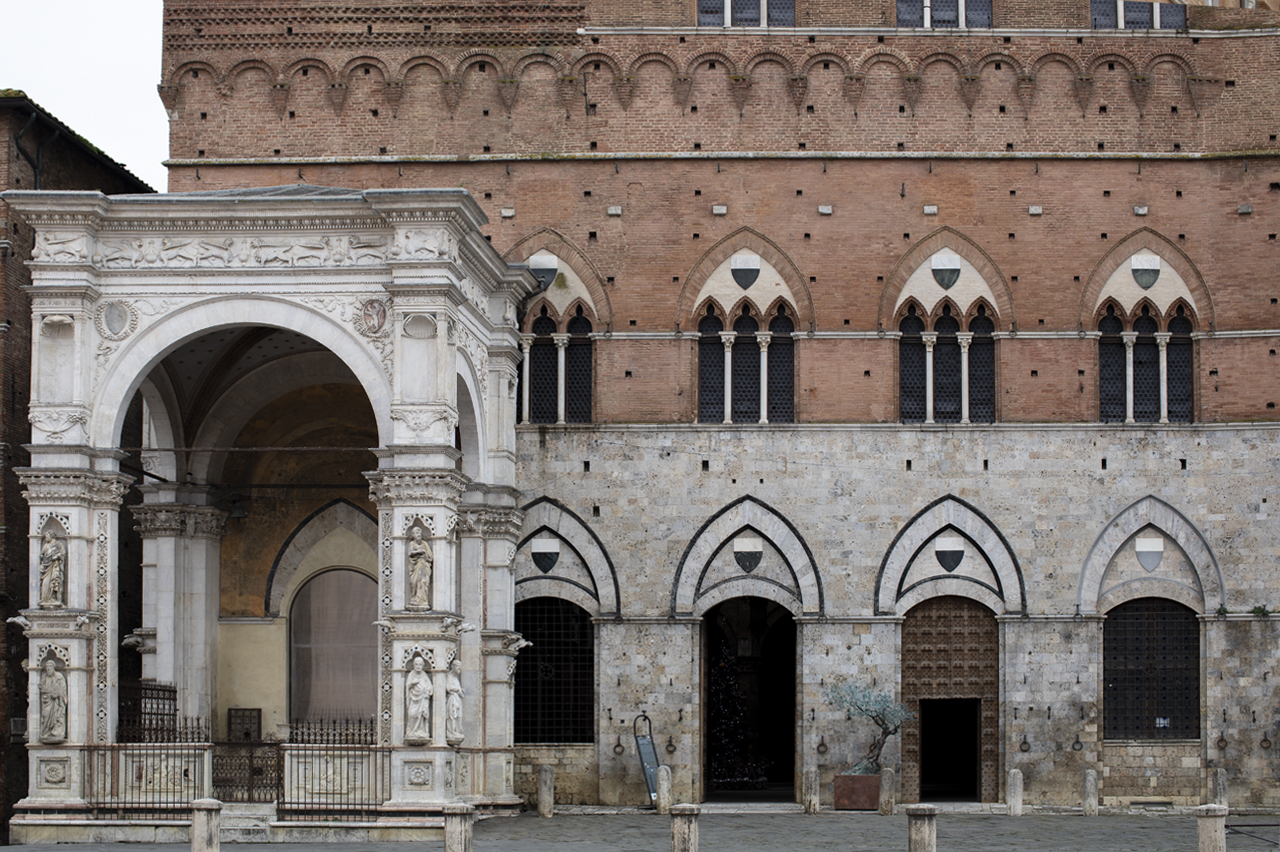
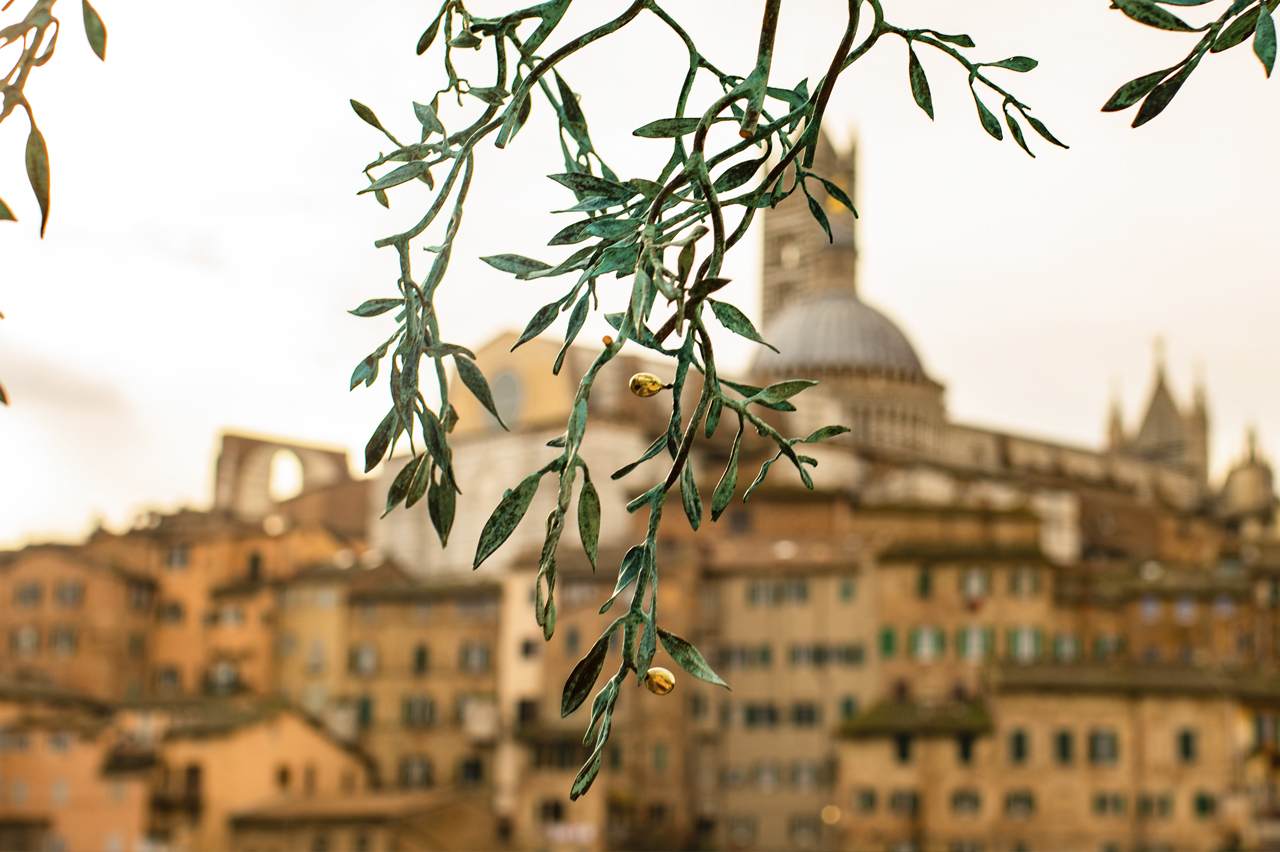

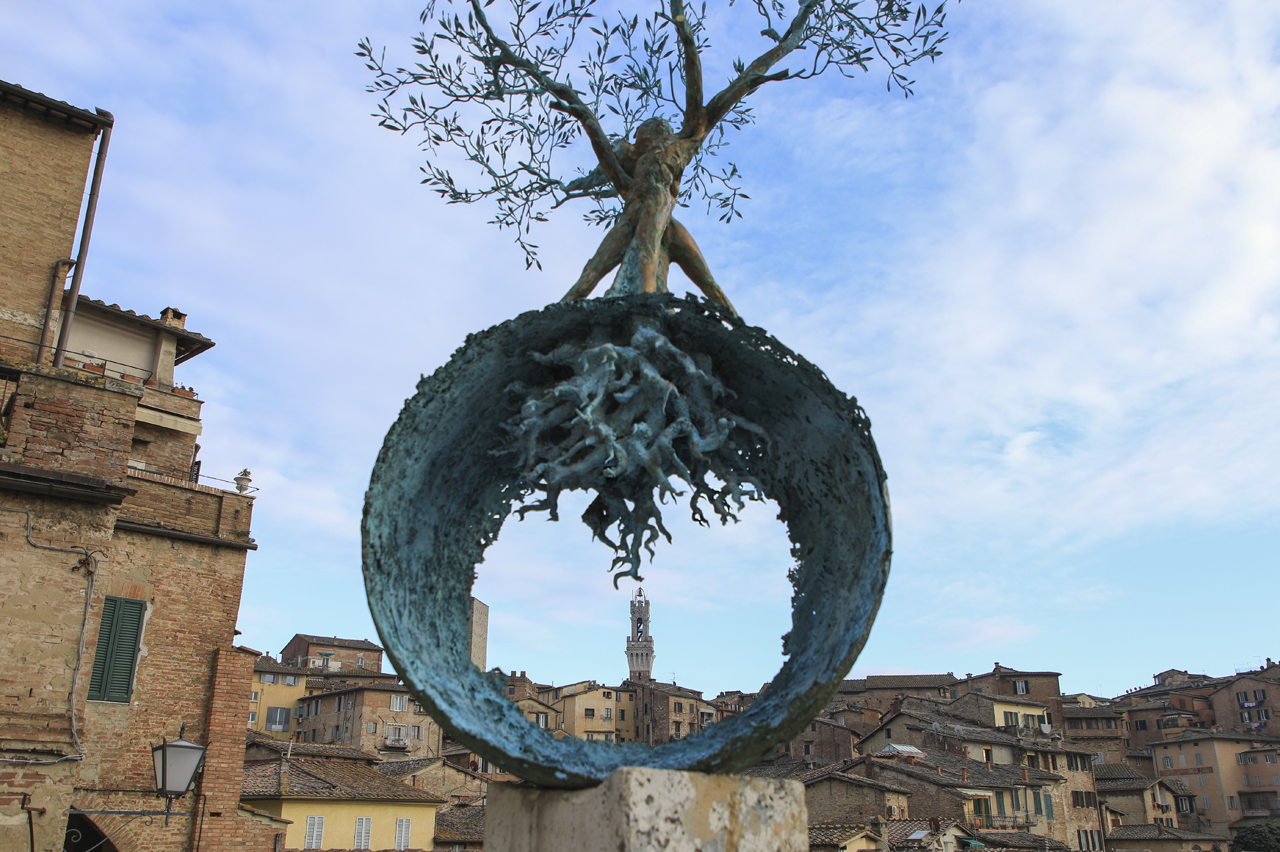
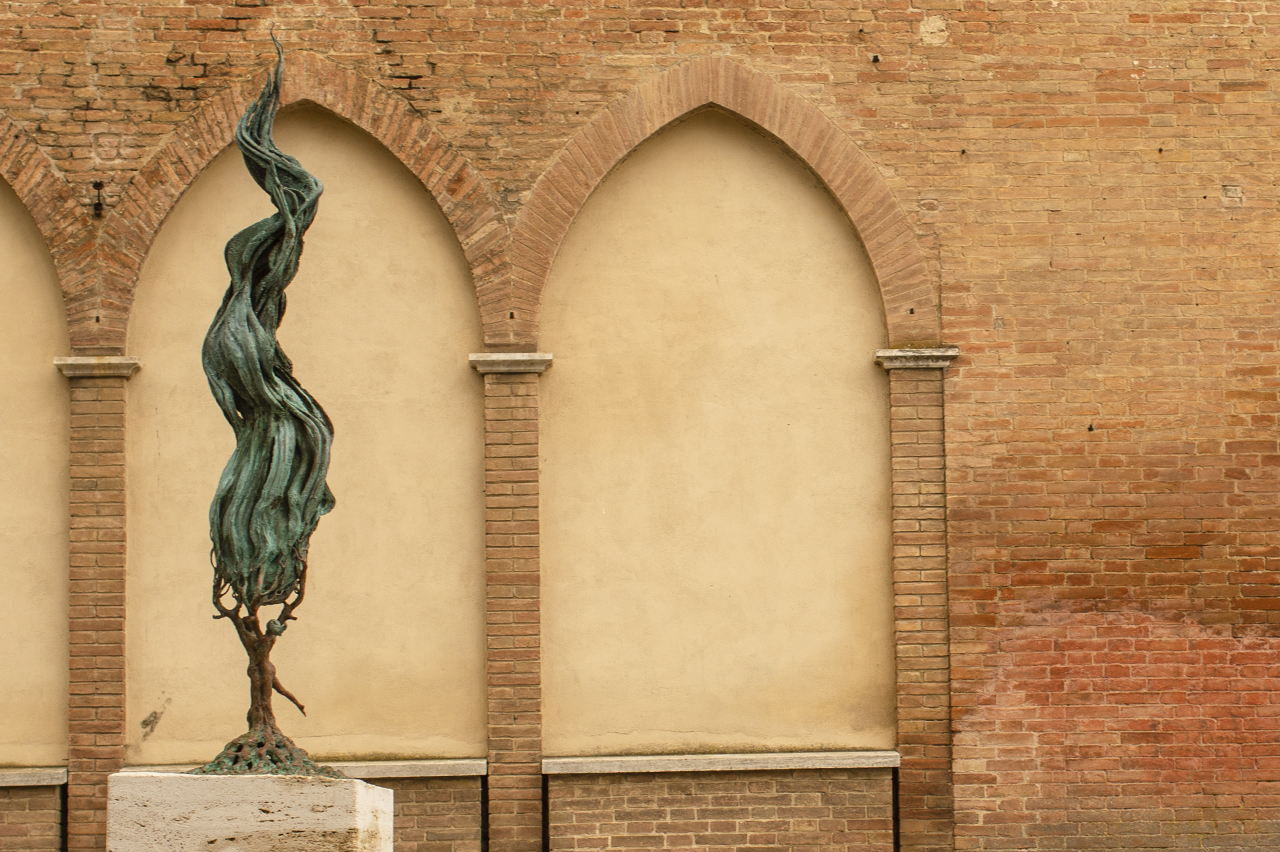
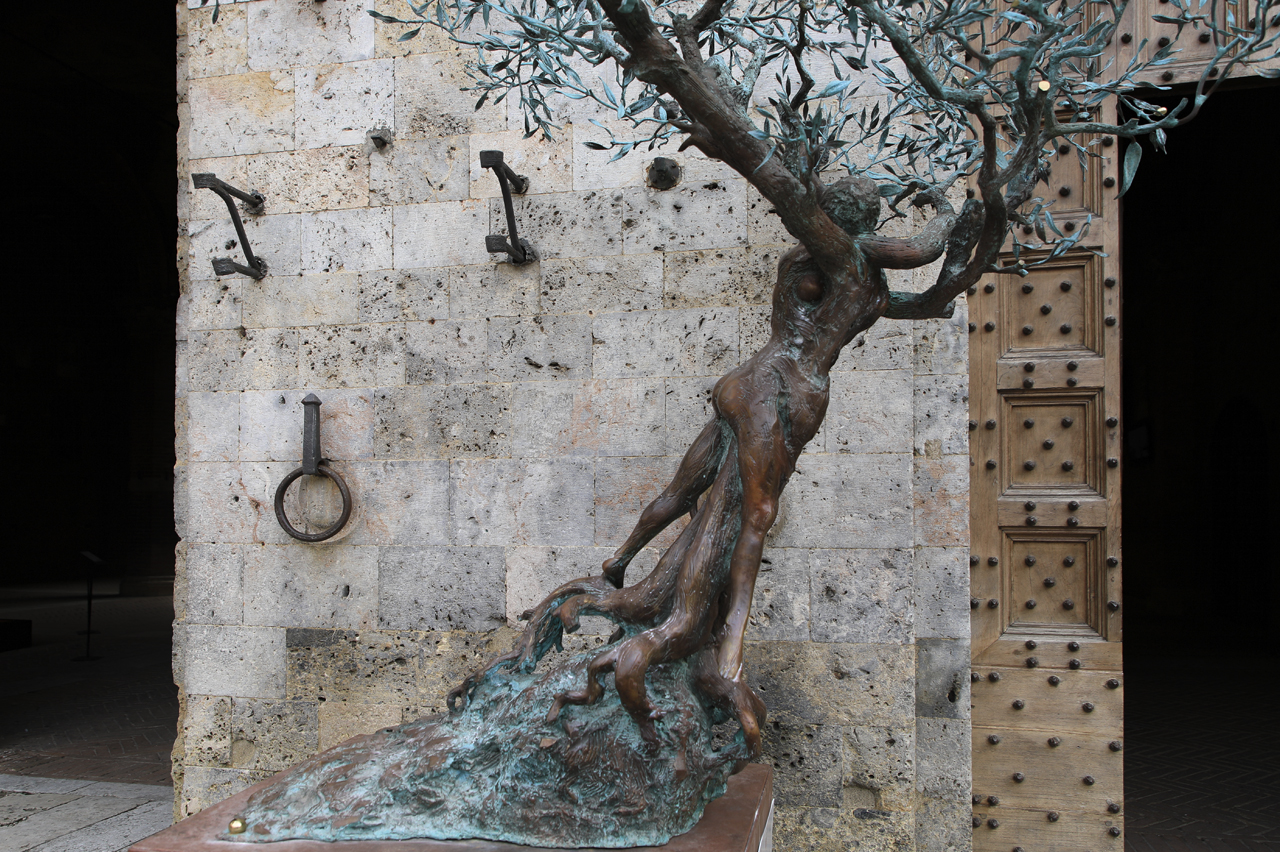
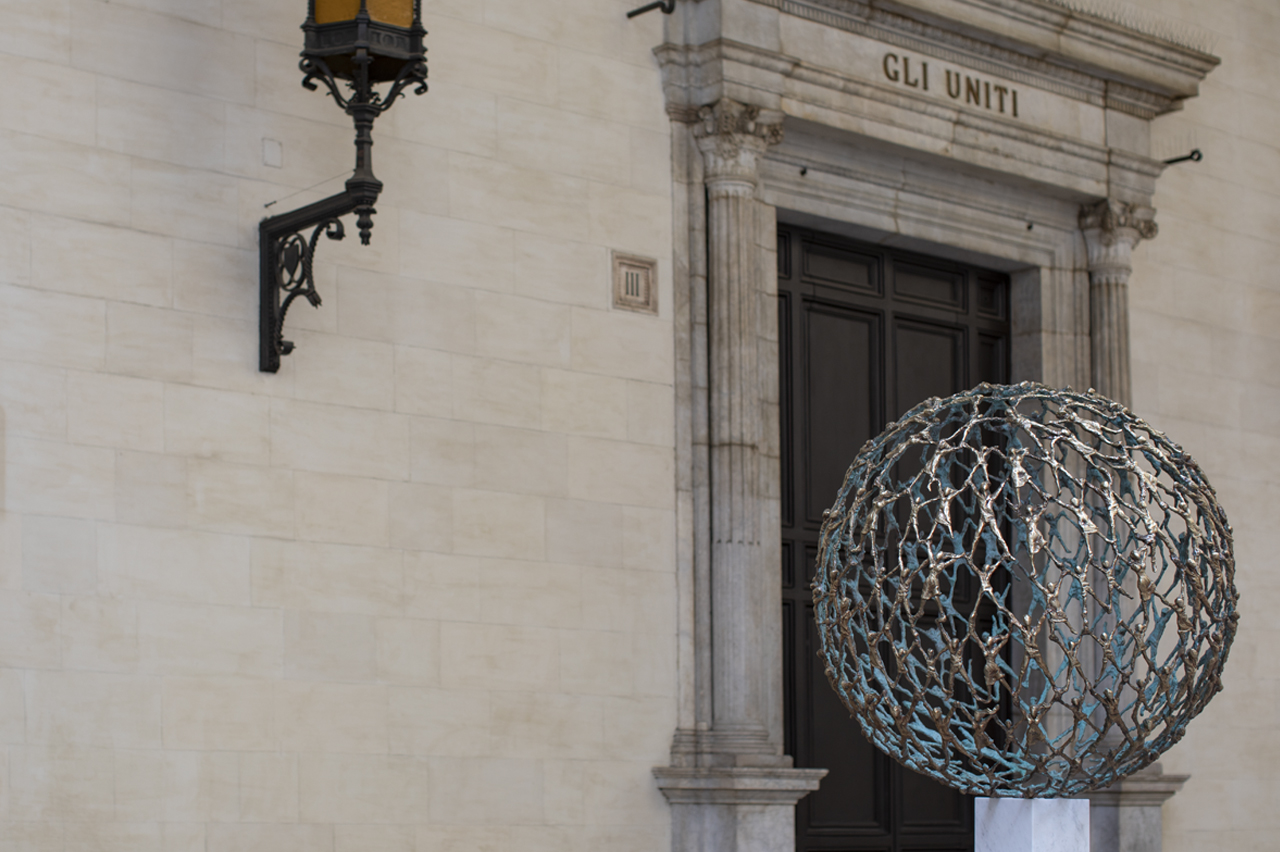
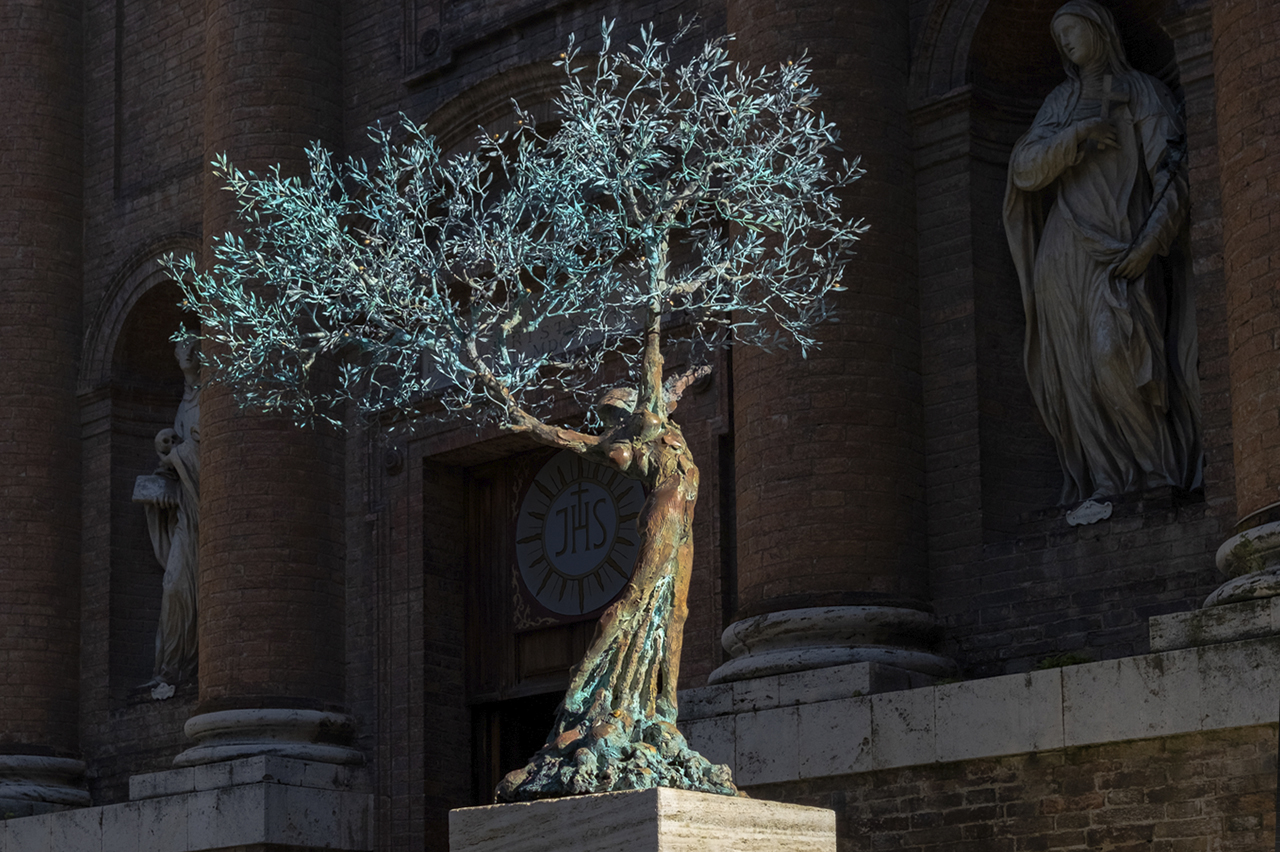
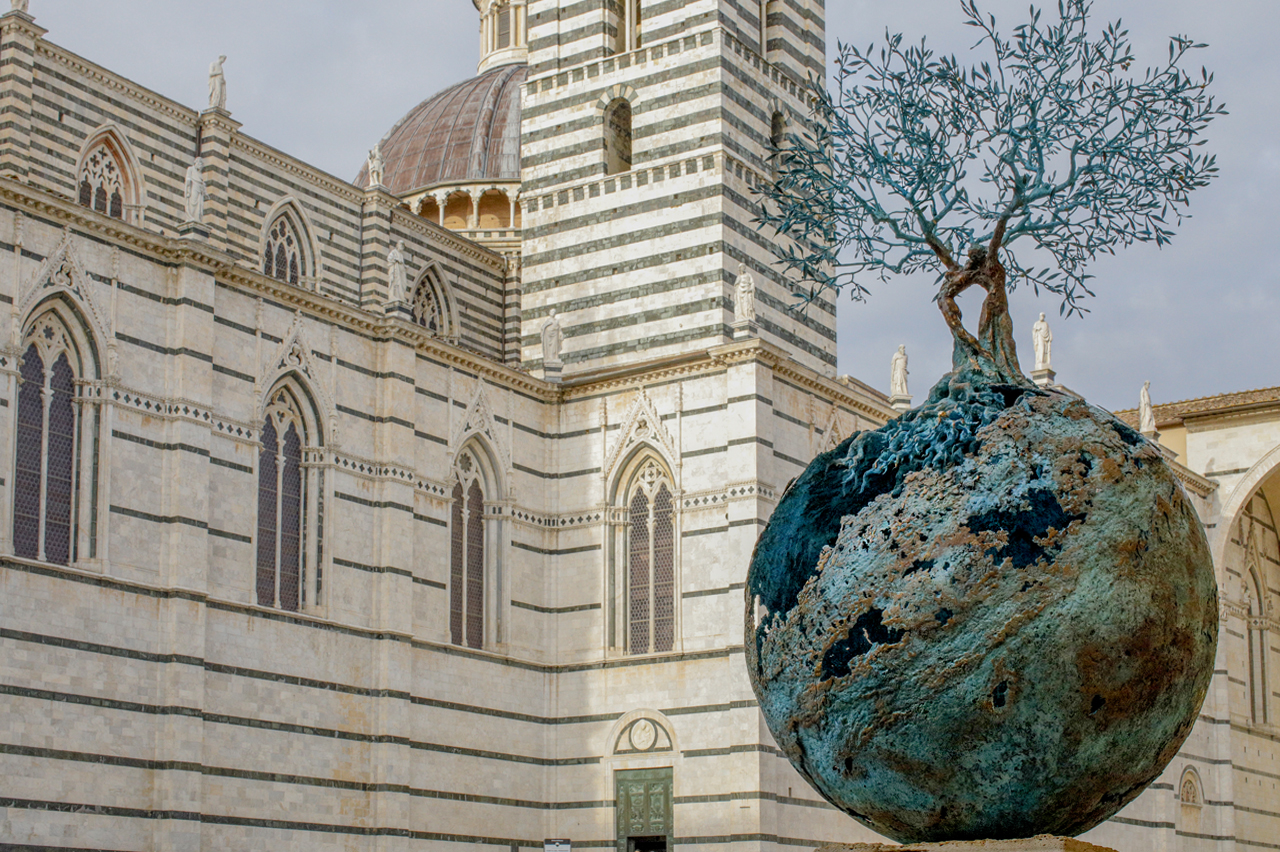
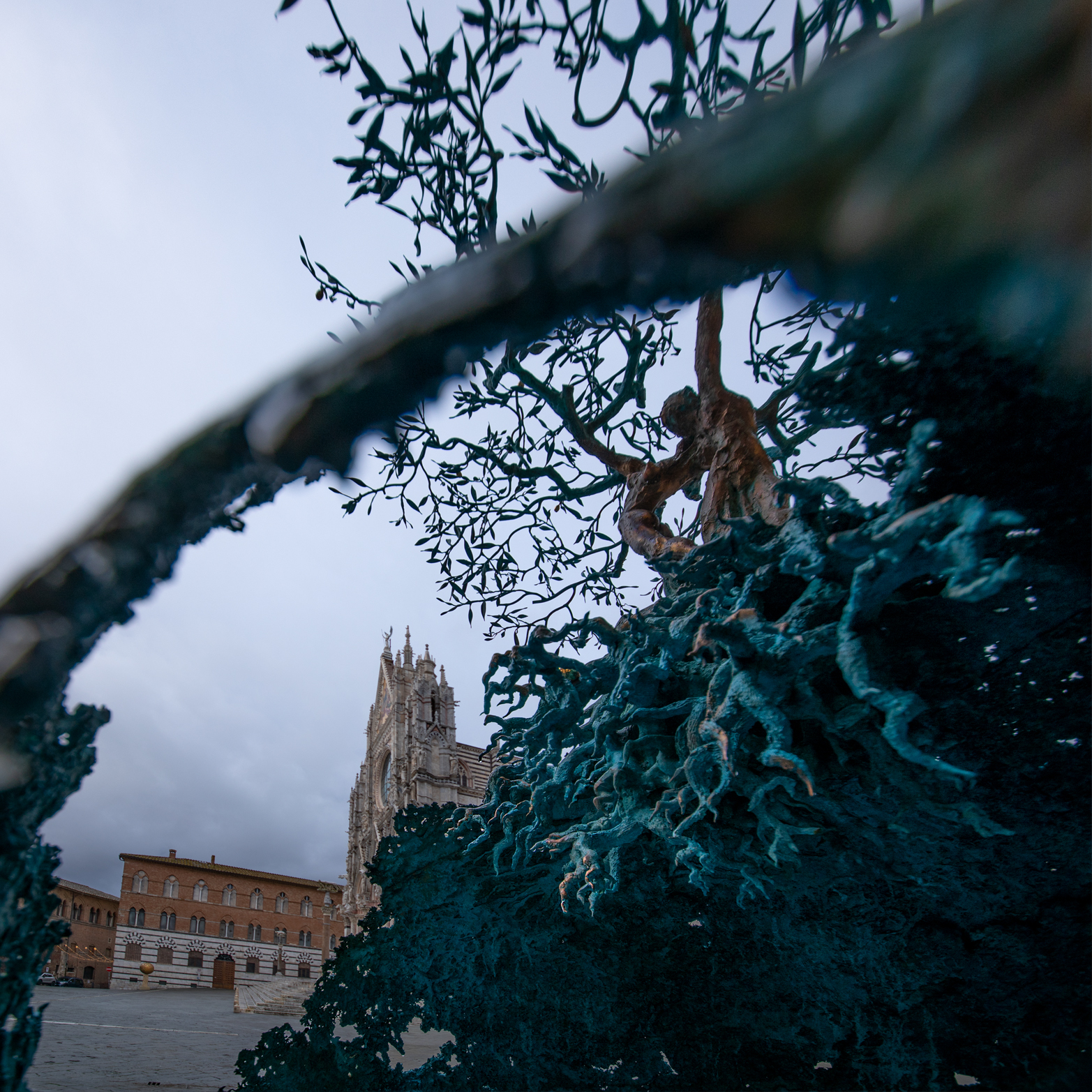
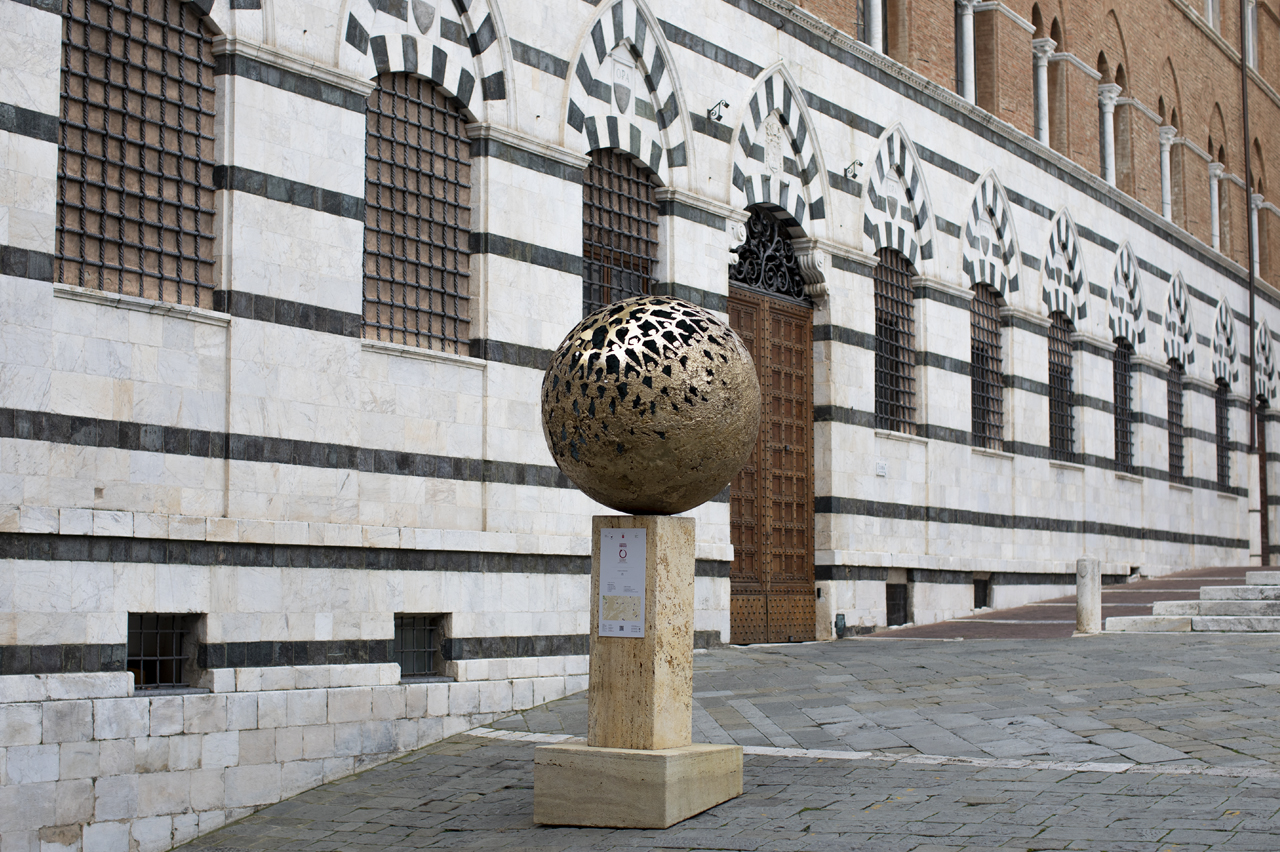
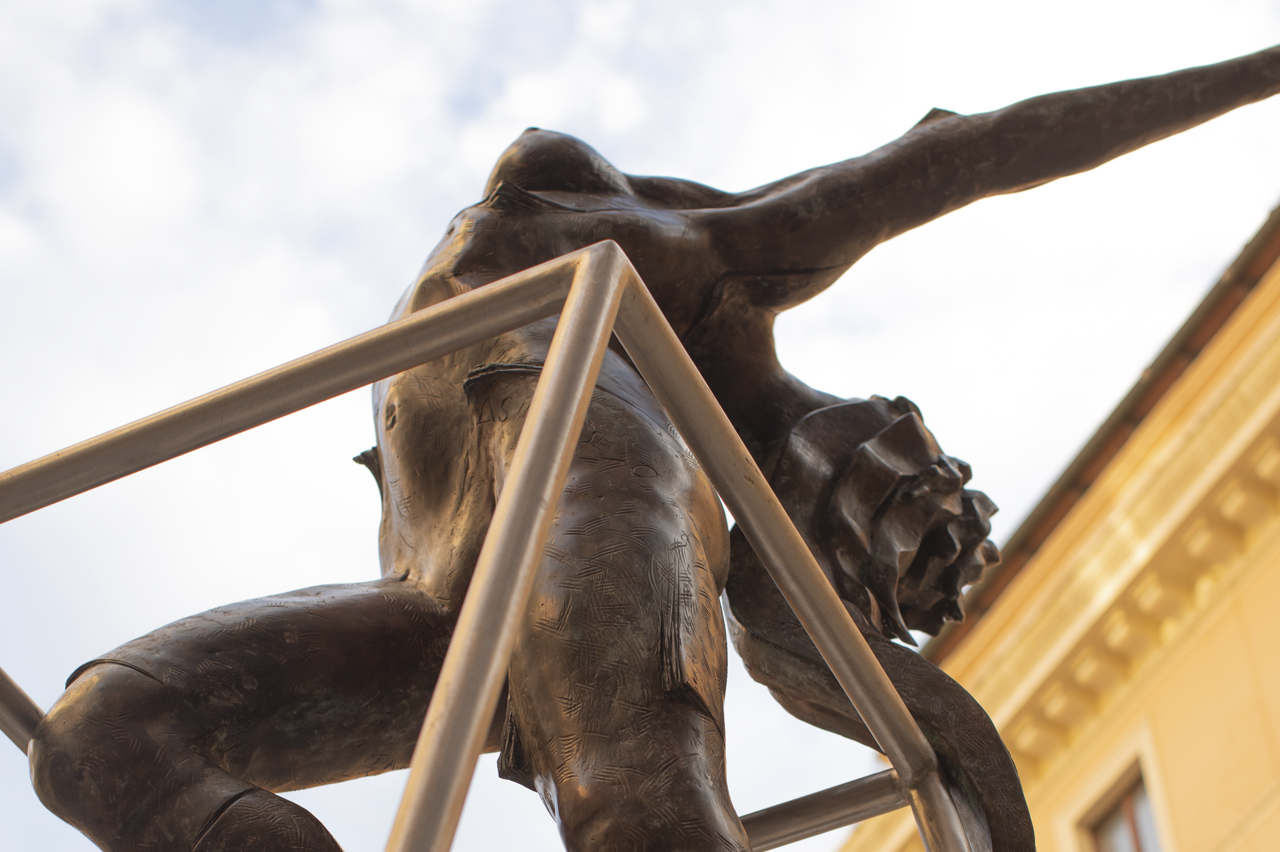
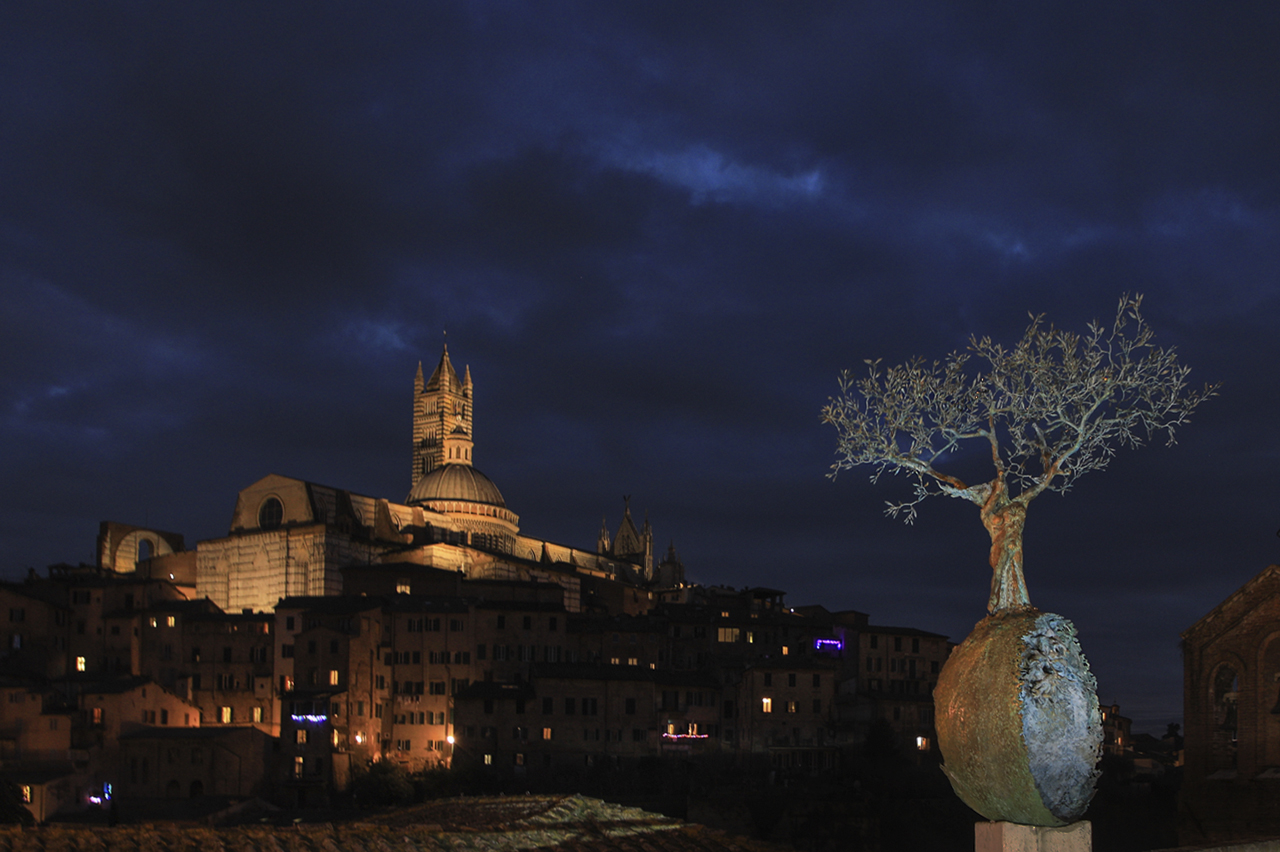

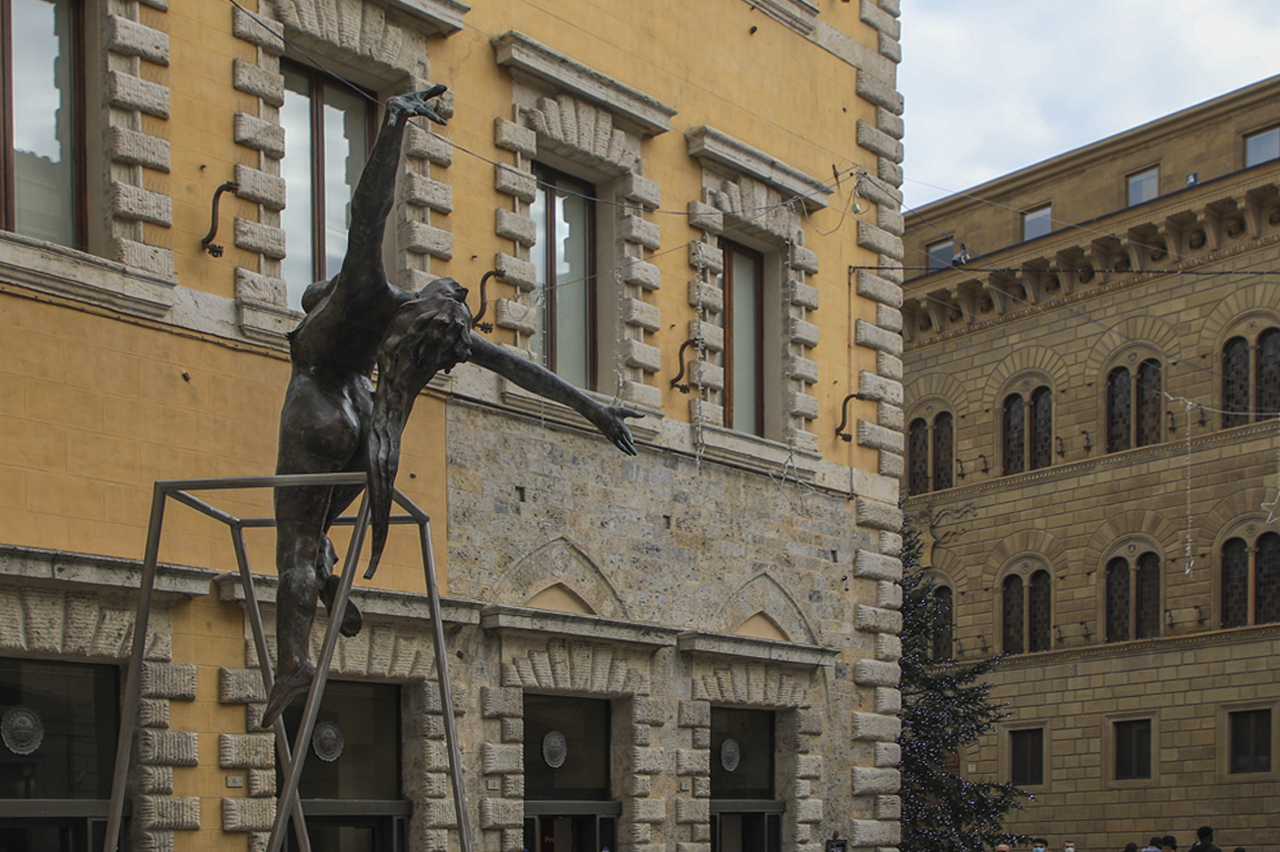
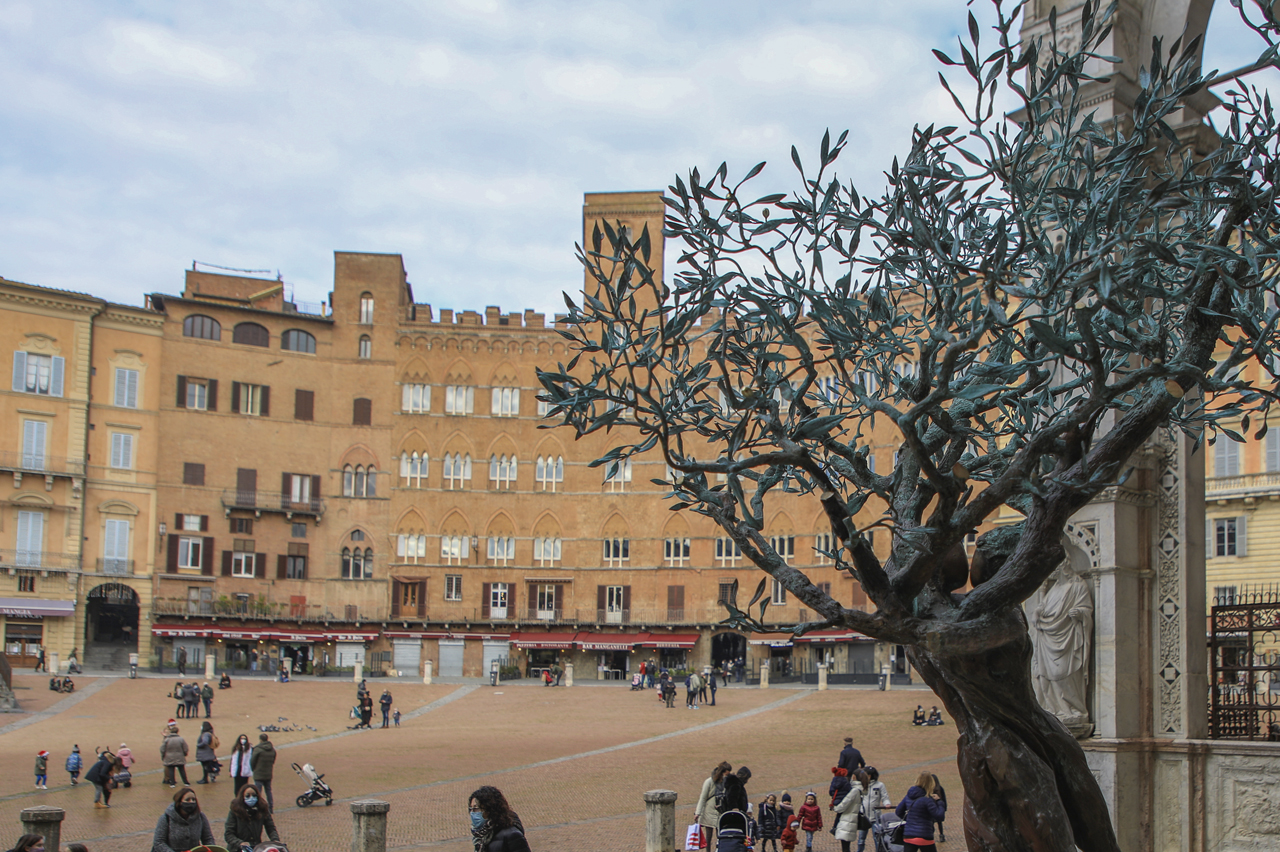
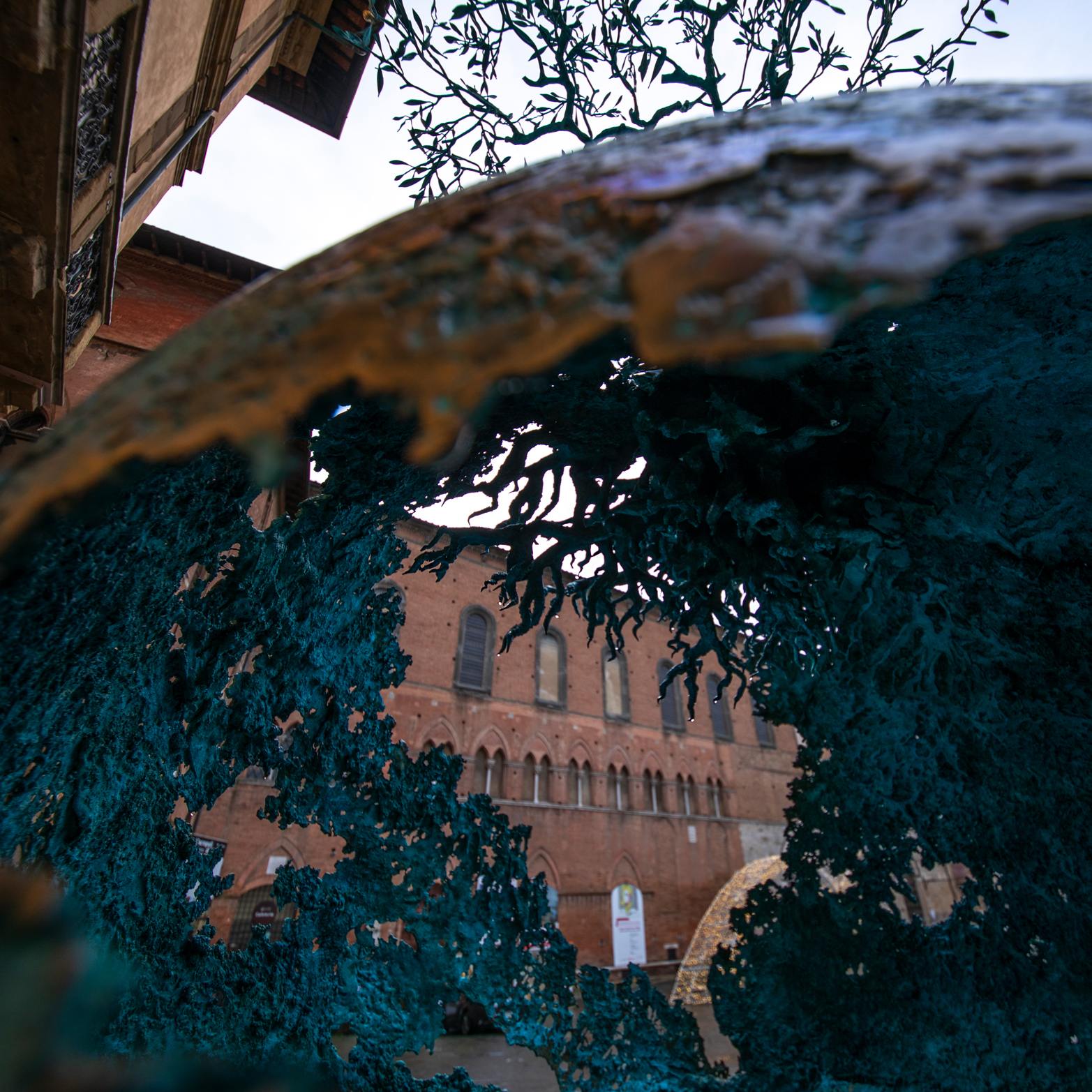
MAGAZZINI DEL SALE

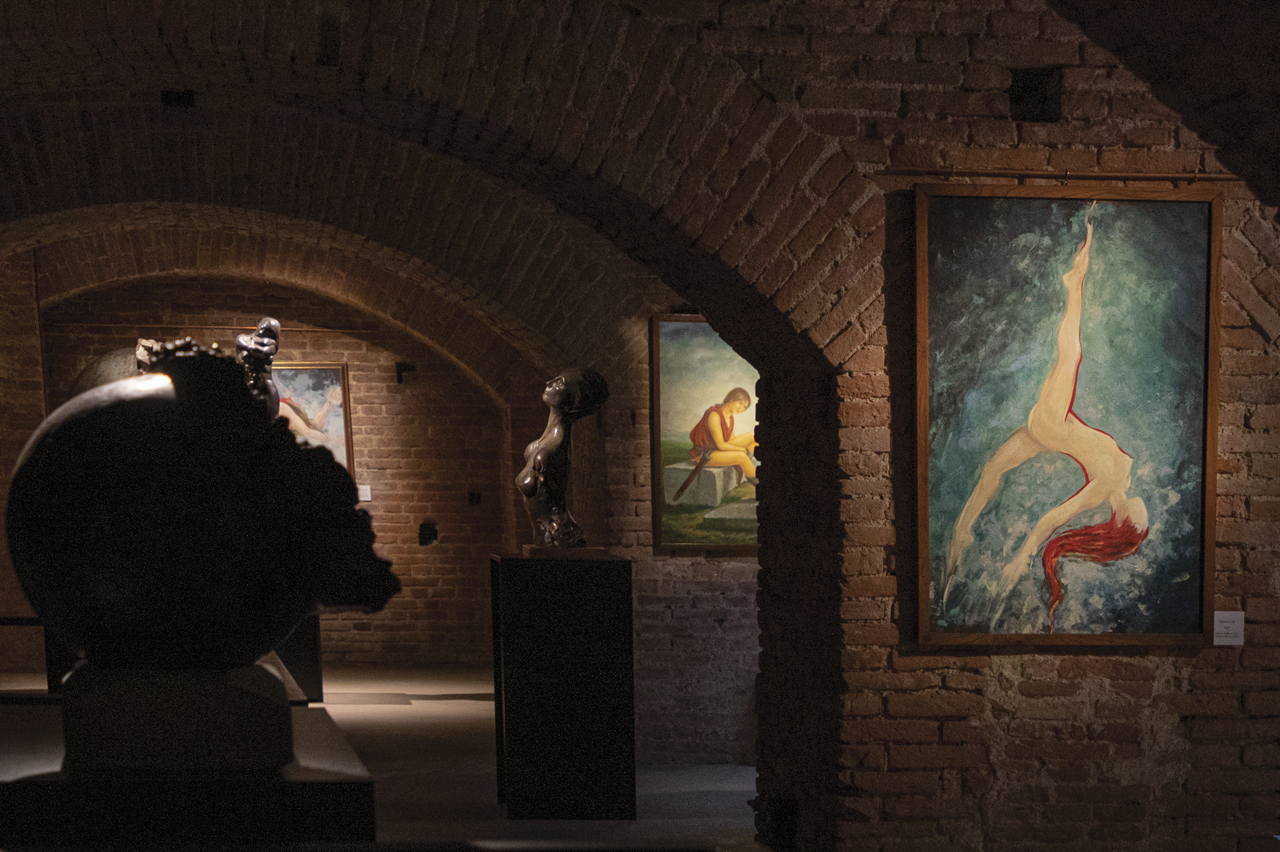













Paradise is under our feet
as well as on our heads
Henry David Thoreau
